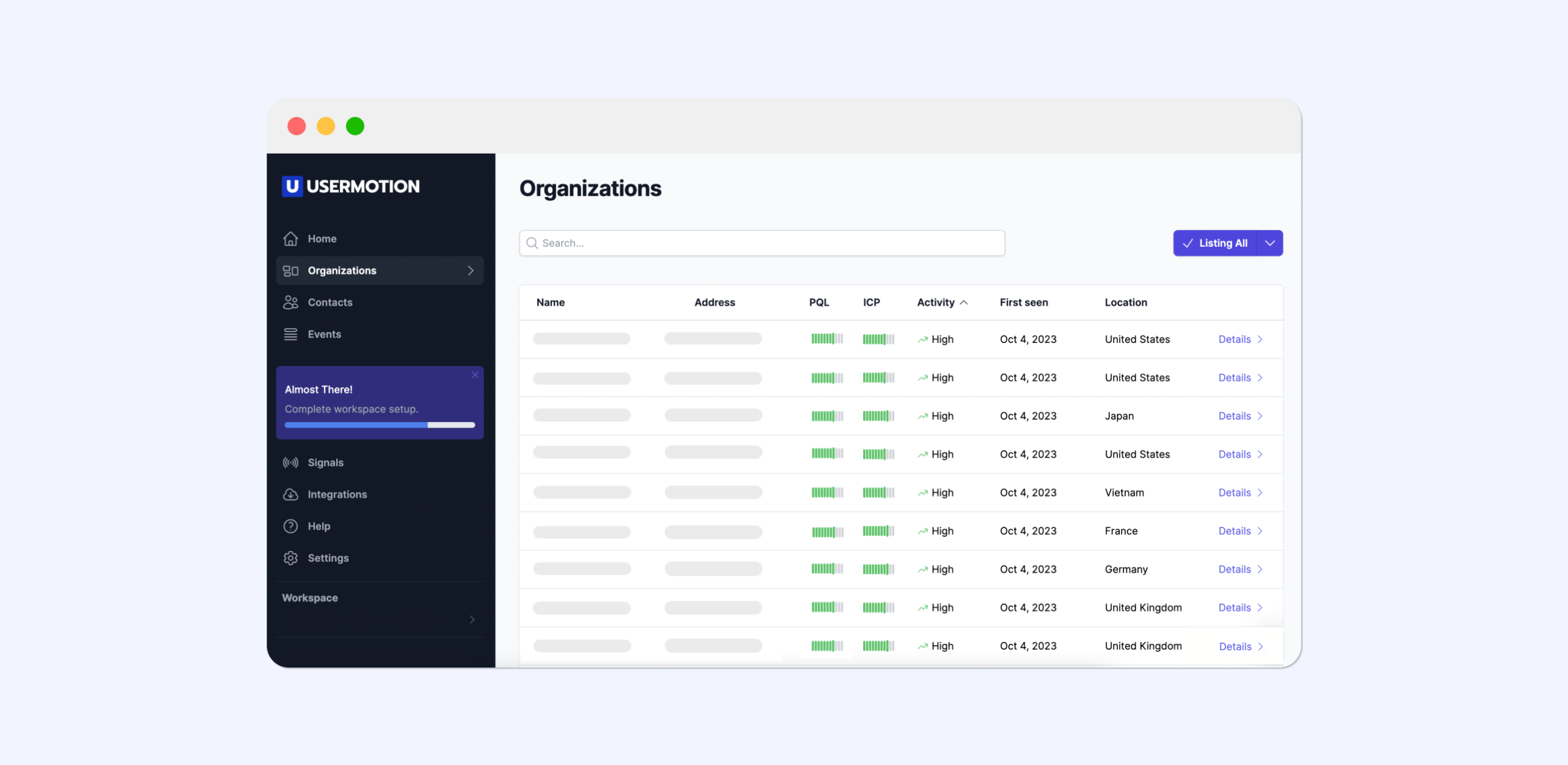Traditional CRMs rely on the input of various high-touch teams and the data collected from paying customers.
This causes a problem for product-led SaaS businesses. PLG SaaS businesses have either freemium versions of their products, free trials, or product-focused experiences and can’t collect valuable information about users more likely to buy, expand, or churn.
This is where the need for a new-gen CRM approach occurs.
After all, a PLG SaaS company’s best friend is another PLG tool.
In this article, we are going to uncover what a PLG CRM is, why it is necessary (and why not sometimes), how it is different, and how it can help your SaaS.
A PLG CRM provides you with:
- A tool that helps you monitor no-touch or low-touch customers and qualify them as leads (unlike traditional CRM tools that rely on sales calls and notes).
- An overall view of all teams’ operations so that team alignment is easier,
- A record of the users’ interactions with the tool in order to qualify them as leads or not,
- Integrations with various other tools to gather all data in one tool and send notifications,
- Timely notifications on conversion, upsell, or churn possibilities for you to act quickly,
- And an advanced breakdown and segmentation capability.
What is a PLG CRM?
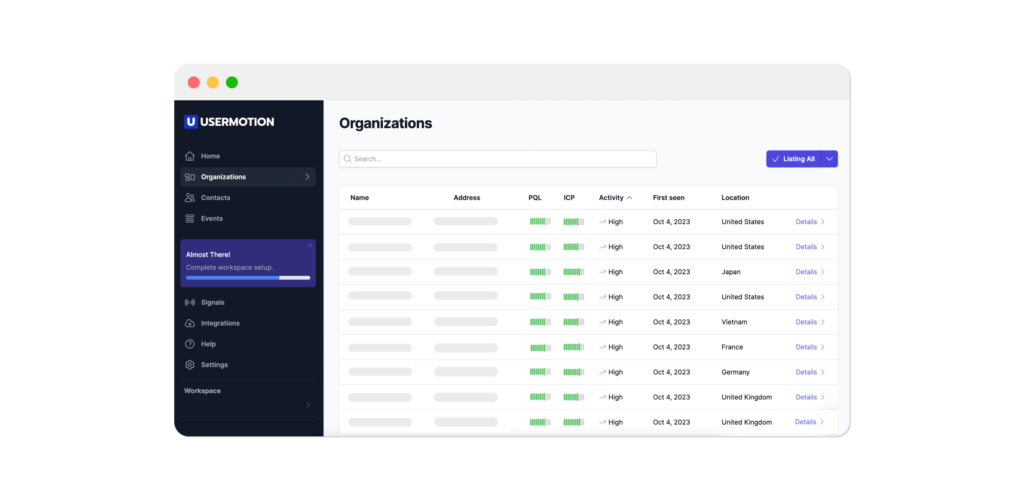
PLG CRM is a tool that enables go-to-market and sales teams at product-led companies to get product usage and customer fit data and manage all their company’s relationships and interactions based on them.
In other words, product-led growth (PLG) CRMs replace the old way of lead qualification, identification and customer interaction methods and integrate with the cloud data warehouse.
By connecting current CRM, product analytics, helpdesk, conversational relationship systems, and billing data altogether, PLG CRM visualizes users’ and companies’ product activity and segments champions, decision-makers, and everyday users.
This way, PLG companies that don’t rely on sales calls can gather valuable information about their customers and their pre-sales journey as well.
Let me give you an example:
If you are familiar with CRM tools, you know that customers who had a “call” or “demo” with the sales team would qualify as leads after the sales taking notes, since they showed their intent to buy by participating in a call or demo. You can also see an example below.
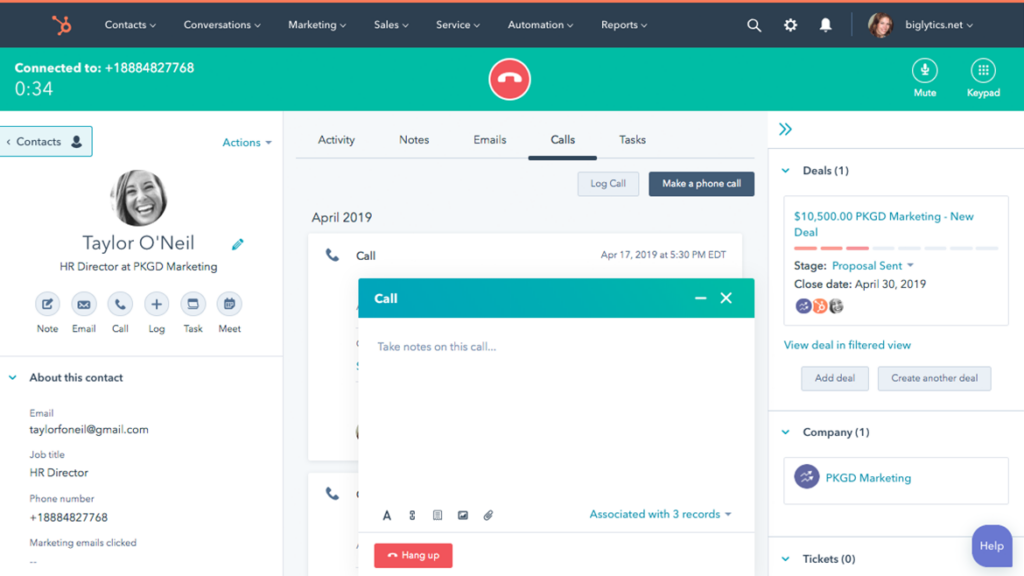
That method makes sense for non-PLG companies where the sales process requires calls, demos, and a lot of 1-1 time between the sales team and the customer.
But, PLG companies are giving customers the liberty of self-serve onboarding:
- They find out about the solution organically, without the need for outreach,
- They sign up for the free version without a demo or a discovery call,
- They finish the self-serve product tour and onboarding experience,
- And they make the purchase through the tool’s panel or pricing page.
And as you can see, the sales team isn’t involved in the process. Therefore, there is no first call, demo, or email.
Or, in some other scenarios, the potential buyer may opt to have a conversation with the sales or support team through a live chat widget. There is some form of conversation there. But, it is identified and scored differently.
That is exactly where a PLG CRM comes in.
Why do you need a PLG CRM?
One significant advantage is that PLG CRMs uncover more qualified leads.
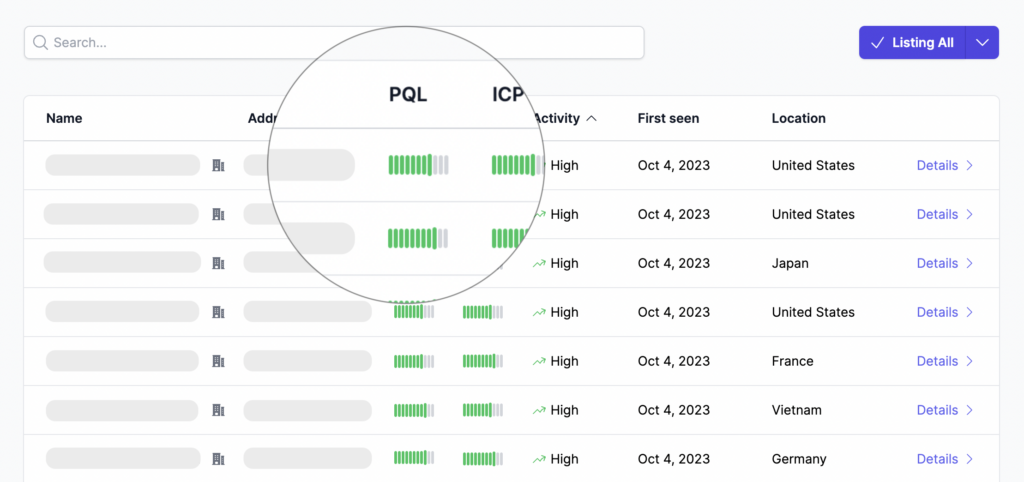
Many of your ideal customer profiles (ICPs) in a PLG environment may not have interactions with your sales team or make a purchase yet. These product-qualified leads (PQLs) are extremely useful, and a typical CRM is unfortunately unable to identify them.
PLG companies rely on:
- Self-serve users,
- Low-touch or no-touch potential customers,
- And an engaging onboarding sequence.
That is why those companies get leads that:
- Get on board with the tool and try some features,
- Invite their team to test the product,
- If applicable, integrate your tool with theirs or install the code,
- Log in often, or ask for help even without completing a demo.
Those leads are called product-qualified leads.
And traditional CRMs aren’t able to identify or track them.
Another aspect that those CRMs lack is the ability to track the health of existing customers.
Since one of the goals of adopting a product-led strategy is to enable all tiers of users to get the best experience, you need to listen to all end-users and not only the executives who keep the communication going.
Implementing a PLG CRM such as UserMotion allows you to track and monitor customer health scores. So, you can see upsell opportunities and identify high-churn-risk users even before they realize it themselves.
But what else can a PLG CRM do? Let’s break it down:
What are the Features of a PLG CRM?
Well, it enables flexibility in lead categorization and scoring.
But that’s not all. Here are all the details:
1. An overall view
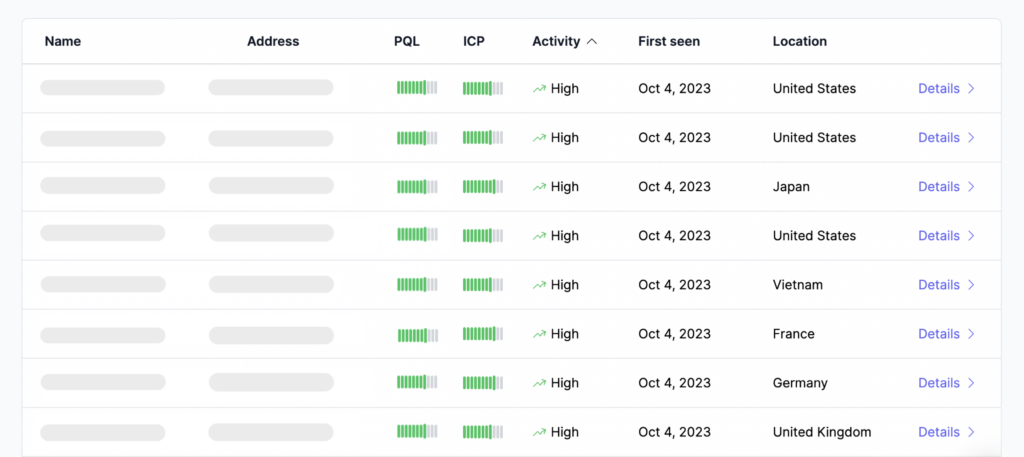
Just like traditional CRMs, PLG CRMs also aim to bring all teams’ operations under a single platform – with that platform being the CRM.
Basically, it gives a view of all customer data. For example, marketing, support, customer success, revenue, and sales.
This allows operations to flow smoothly and teams to align quickly. Hence, all those teams are able to provide a better and easier experience to all users.
2. A record of interactions
This is one of the parts where standard CRMs and PLG CRMs differ. A PLG CRM doesn’t only rely on notes from the teams; it detects and records all product and customer interactions.
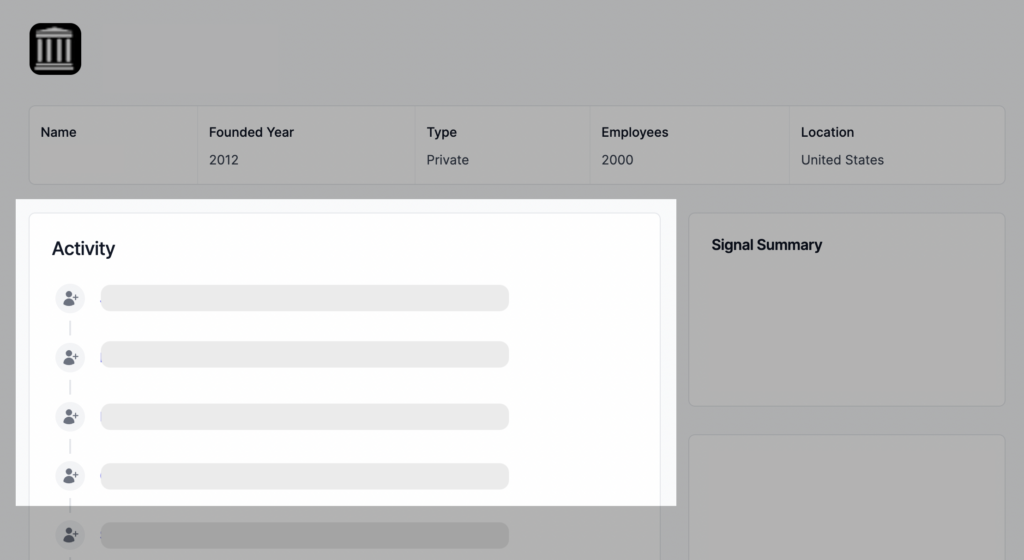
This can be feature usage data, activity data, support data, billing data, or any other specific attribute that you set.
This specific functionality of PLG CRM is especially important for sales teams to take action at the right time, at the right place.
3. PLG CRM integrations with major SaaS tools
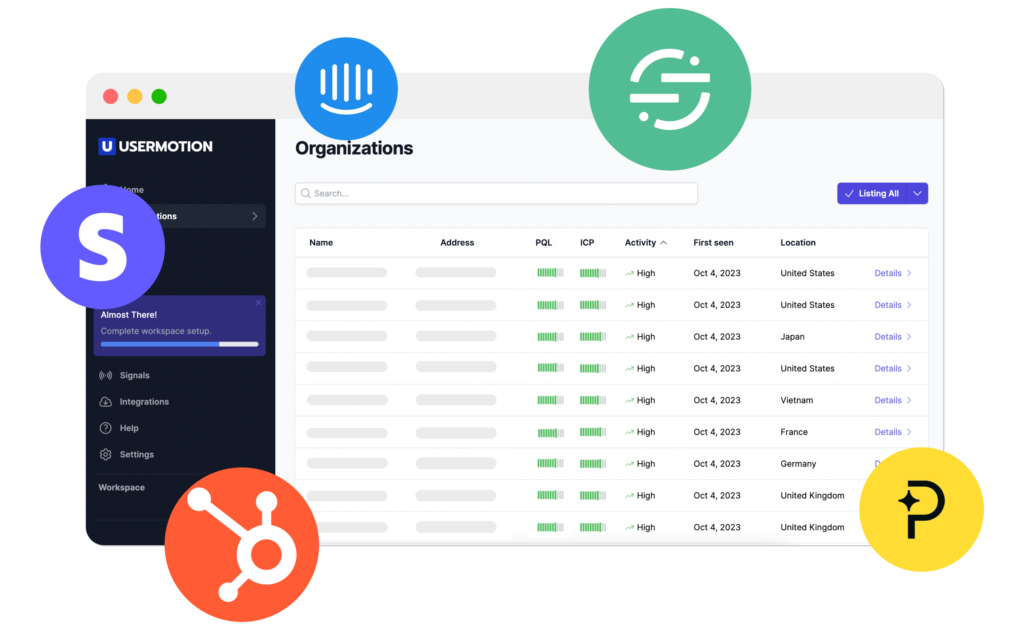
As I mentioned, the PLG CRM aims to bring together no-touch data points and alert you when necessary. In order to do this, it requires data from all your other PLG tools. Those could be:
- Your existing CRM
- Your customer data platform,
- Your support/customer success platform,
- Your lifecycle marketing platform,
- Your onboarding platform,
- Your analytics platform,
- Your survey and feedback platform,
- Your announcement platform.
And to send you notifications, the PLG CRM needs to be able to integrate with:
- Your email provider,
- Your internal communications provider,
- Your chat widget provider,
And any other crucial SaaS stack you use.
4. Breakdowns of a client account by users of the account (if B2B)
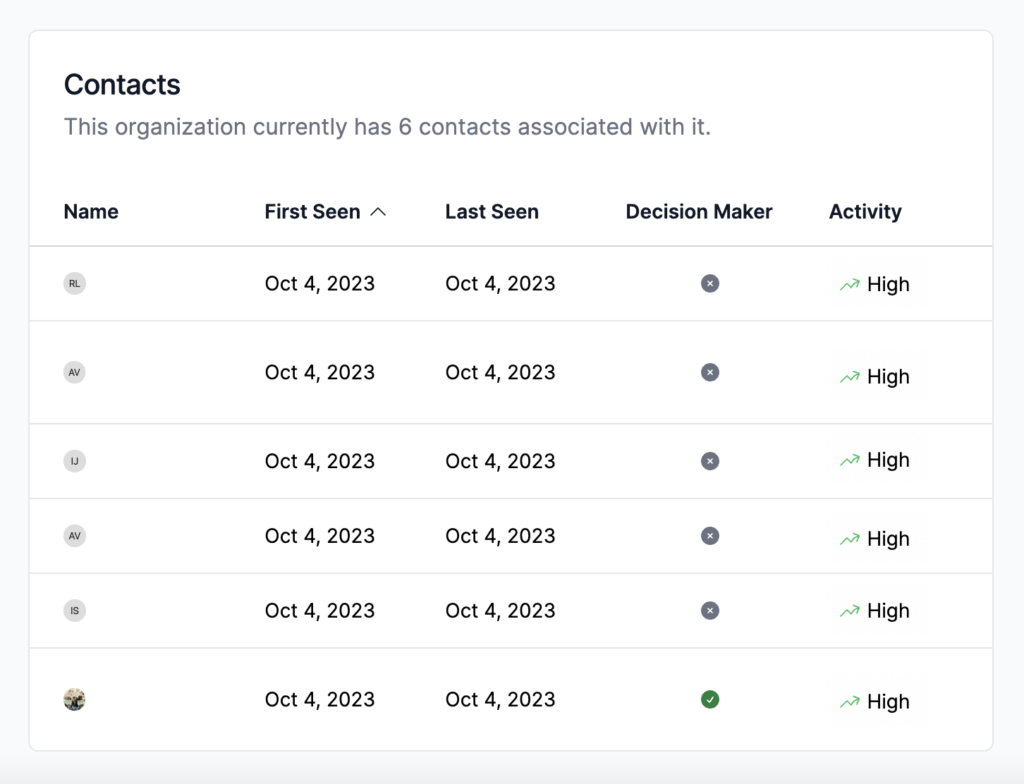
Without proper segmentation and tiering options, you won’t be able to see through all of the different personas that use your product.
Since product-led companies let all tiers of users experiment with the tool at their own pace and method, being able to categorize those segments properly and act accordingly becomes more important.
5. A notification system
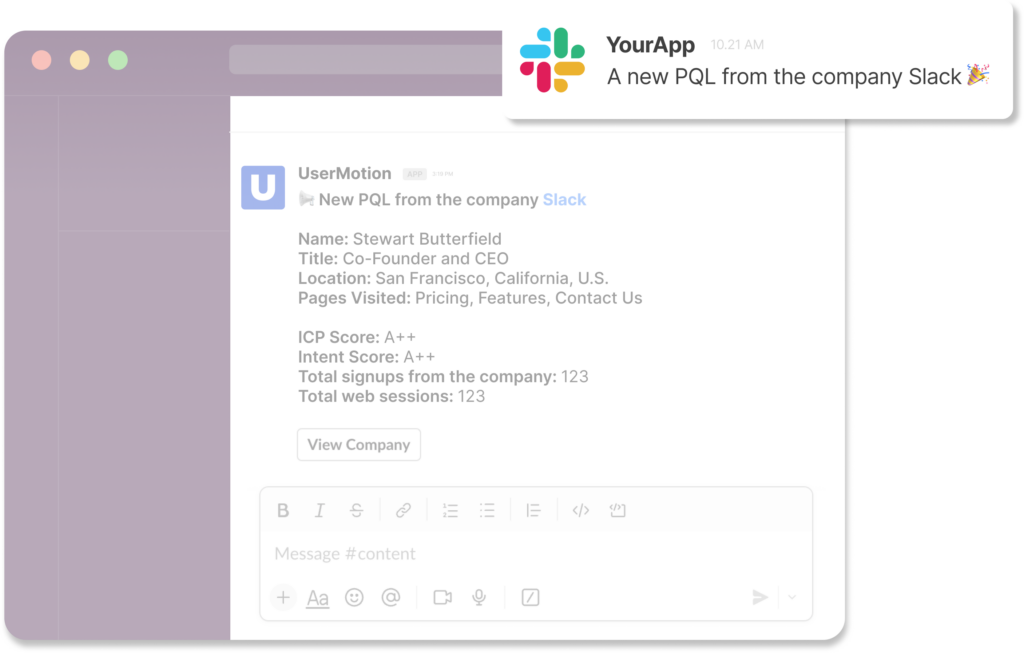
Last but not least, one of the most important aspects of SaaS businesses today is timing. Users are looking for the best solution possible, and you have limited time to impress them.
Your PLG CRM should have the ability to detect all possible conversion and upsell opportunities and send you notifications in real time about vital customer interactions so that you can be the first business on their list to consider.
The same goes for churn detection. If they don’t use certain features, or they are not actively using the product at all, it could mean that they aren’t getting the most out of your platform, which could make them more likely to churn.
It’s important to remember that signs of churning often show up a long time before the actual event. The PLG CRM can do the notifying part for you so that you can save your precious time and focus on your business.
Does a PLG CRM Replace an Existing CRM?
Not really, and the purpose of a PLG CRM isn’t to replace seasoned CRM platforms.
Rather, they allow you to see notifications about your product-led operations that the CRM can’t detect, and send PLG-related data into the CRM.
Still, PLG CRMs are not necessary for all PLG companies, as some may find success with traditional CRMs. It may not be suitable for companies with a low volume of users or limited resources.
How Can a PLG CRM Help Achieve Goals Faster?
Increased sales efficiency
In a PLG world, understanding who is qualified and who isn’t necessitates combining traditional firmographic and profile information with data on how the prospect has interacted with the product. A PLG CRM enables teams to pool these data points and create prioritized views of the individuals and accounts on whom sales should focus.
Reporting automation
One of the best features of a PLG CRM is that teams don’t have to search for the information they require. Instead, PLG CRMs provide dependable, automated reporting for the parameters that matter most to PLG businesses.
Lower churn
A PLG CRM will assist you in identifying when customers are most likely to churn, allowing you to assist these customers in becoming more successful with the product. With the visibility given by a PLG CRM, you may substantially minimize churn and boost customer lifetime value (CLV).
Increased conversion rate
Because a PLG CRM provides greater visibility into consumer behavior, conversion rates improve. Based on their behavior, product, marketing, and sales teams can better determine which consumers are most likely to convert and then target those who may require additional support.
Conclusion
A PLG CRM isn’t a must-have tool for everyone, but it is for product-led companies that are scaling and need to make the most out of their time and data.
Instead of going from tool to tool and seeing whether they have the singular capabilities that can turn your CRM into a PLG CRM.
Want to learn how UserMotion can help your SaaS identify revenue opportunities?
Like yours, many sales and GTM teams in SaaS businesses struggle to identify high-potential leads that are more likely to convert into paying customers. They are unable to see the signals to make data-based decisions. Therefore, tools like UserMotion aim to remove this barrier between the high-potential lead and sales.
If you want to learn more about how we can help your business, book your demo!
What is a PLG CRM?
PLG CRM is a Customer Relations Management tool that enables go-to-market and sales teams at product-led companies to get product usage and customer fit data and manage all their company’s relationships and interactions.
What is product-led SaaS?
Product-Led Growth or PLG is a go-to-market strategy used by SaaS companies that allows potential customers to go through the whole conversion process on their own with minimal touch. In other words, a PLG product is one that sells itself.
What is an example of product-led growth?
Dropbox, Slack, HubSpot, and Grammarly are the best-known product-led growth examples.

